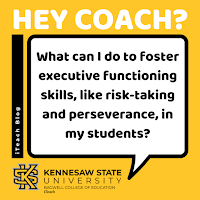3 Ways to Foster a Growth Mindset with School Staff
“Without continual growth and progress, such words as improvement, achievement and success have no meaning.” —Benjamin Franklin
What is a growth mindset and why does it matter? In recent years, the mindset field has changed the way schools operate. Through her research at Stanford University, Lewis and Virginia Eaton Professor of Psychology Carol Dweck has observed that the mindset you choose can have a profound impact on how you live your life.
Individuals can be placed on a continuum based on their mindsets, according to Dweck. Those who believe their abilities are based on innate talents—and therefore can’t change much—have a fixed mindset. Those who believe that success is based on effort are said to have a growth mindset. They believe that with hard work, you can always improve. One definition I like is that a fixed mindset focuses on proving how smart you are; a growth mindset focuses on improving.
Ultimately, leveraging a growth mindset offers you and your staff significant opportunities for innovation and success. Can you really afford to build a culture without one?
Taking action
The development of a culture of learning and innovation may be the key factor enabling a school to distance itself from the competition. To foster such a culture, encourage growth mindset. Here are three ways K-12 leaders can take action now—and when schools reopen.- Remodel faculty meetings. Meetings, where information is shared that could have been sent via email or other tools, need to end. Instead, use meeting time for engaging activities that enhance instructional practices. For example, implement a “Tuesday Technology Session.” During this session, teachers could come together to discuss what they want to learn and what they could share with their colleagues. This feedback could be used to create a year-long technology education “menu” that allows teachers to learn from each other on relevant topics.
- Embrace the idea that learning occurs when people are stretched beyond their comfort zones. In other words, make room for everyone to make mistakes. One thing educators work on is helping students get comfortable making mistakes, but the same must be true for administrators and teachers. Teachers are facing challenges such as adopting the Common Core and integrating technology tools, which introduce significant changes to most classrooms. Speaking from an ed-tech perspective, we must embrace the belief that all educators can leverage technology in powerful ways in the classroom.
- Stay open to feedback. The largest roadblock to growth and innovation is a leader who is closed to receiving feedback. A growth mindset begins with a leader, who has not cornered the market on good ideas. Leaders who stay open to feedback invite others to be truthful about what is going well and especially, what isn’t. This mindset allows others to come forward with ideas as well as questions, and encourages them to readily embrace feedback. Most important, when staff members feel that they can share with a leader, it positions the leader to take action on failures or mistakes before their impact becomes severe.
Ultimately, leveraging a growth mindset offers you and your staff significant opportunities for innovation and success. Can you really afford to build a culture without one?
Whether you are an administrator or an instructional coach, you have the power to influence and encourage your positive school culture by demonstrating a growth mindset. Promoting a growth mindset empowers everyone to be innovative.
Contributing coach Ronald Catlin
Whether you are an administrator or an instructional coach, you have the power to influence and encourage your positive school culture by demonstrating a growth mindset. Promoting a growth mindset empowers everyone to be innovative.
Contributing coach Ronald Catlin




Comments
Post a Comment